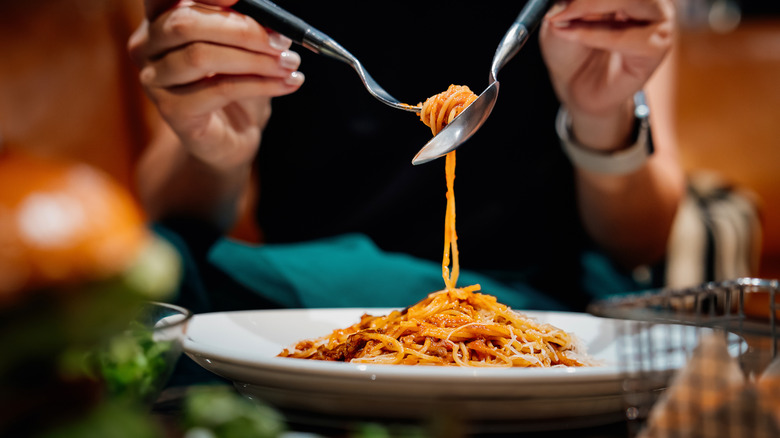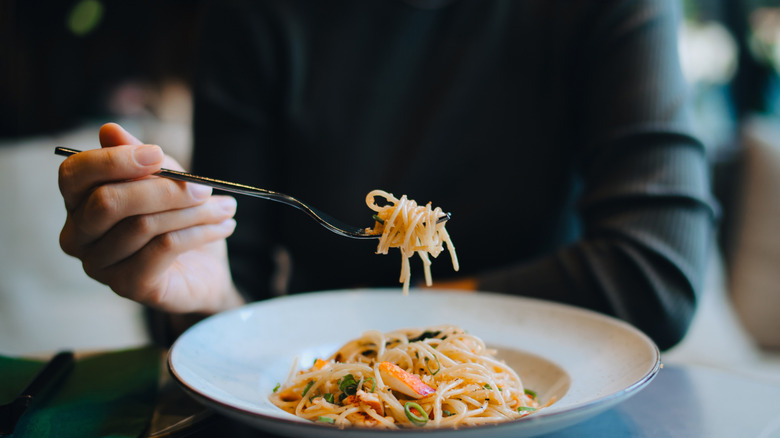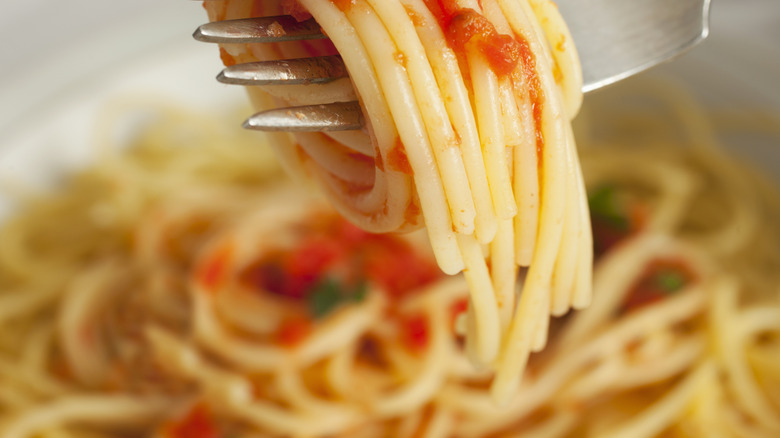A Simple Dining Etiquette Rule That Tourists Frequently Break In Italy
The Italian cuisine is one that is not just loved by many but also considered a huge part of the Italian culture. Food isn't just about eating, it's also about social gathering, which has a sacred place in Italian life. Some shops and stores even close so everyone can go home to enjoy their midday meal with friends or family. When it comes to Italian dining etiquette, tourists should be familiar with the many misconceptions about it.
One common unspoken rule in Italian dining etiquette is that you don't use a spoon when eating long pasta (such as spaghetti or linguine, for example). So the next time you're eating out, remember that one of the unspoken rules tourists in Italy break most often is none other than using a spoon when eating long pasta. If you're unfamiliar with Italian dining customs, try to observe the locals and adapt accordingly. Keep in mind that different regions might have unique dining etiquette based on their own local traditions so always be sure to ask or observe a local and adjust when possible to stay respectful of the regional dining rules as a tourist and immerse yourself in Italian culture.
Tips for respecting dining etiquette as a tourist in Italy
Dining has a place of particular cultural importance in Italy. Italians value traditions and will possibly raise an eyebrow if you're doing something frowned upon. Many people use a spoon for twirling pasta and think it is an Italian tradition, but as a tourist you should know that Italians never use a spoon when eating long pasta. Why is that? Well, because if it is cooked correctly al dente, it won't need a spoon at all and is an unnecessary tool all together.
As a tourist, it's best to get familiar with the common mistakes you should avoid that will instantly flag you as a tourist such as the using a spoon for pasta misconception. It's not only frowned upon, but Italians may view using a spoon as a sign of ignorance to Italian norms and dining customs. Other dining rules tourists should avoid when in Italy is asking for pineapple or ketchup on pizza, drinking a cappuccino in the afternoon, placing bread on your dish (instead of next to it), or eating before your host says "buon appetito."
A step-by-step guide to mastering the no spoon rule
If you can master your technique for twirling long pasta around your fork, you'll have an easier time of showing that you can follow and respect Italian dining etiquette in Italy. Here's a step-by-step guide to help you master the technique: For starters, remember that this technique only works with longer pasta such as spaghetti, linguine, or fettuccine.
Secondly, how the pasta is cooked also matters. When cooked al dente, the pasta's hardness allows for easier twirling without the need for anything like a spoon for support. You should be able to hold the fork in your dominant hand just like a pen and insert the fork into the pasta near the edge of the plate. You can use your plate as a base to support the fork instead and allow for efficient twirling.
If necessary, you can slightly angle your fork for better control and slowly twirl the fork in a circular motion until the amount of pasta you want to eat in one bite is wrapped around your fork. Avoid collecting more than this and lift the pasta slightly to make sure it doesn't fall apart. If your coil of pasta is not tight enough around the fork and slips off, return to your starting position and give it another twirl.


